Golf VII R with the RaceChip Ultimate - The Ultimate Experience
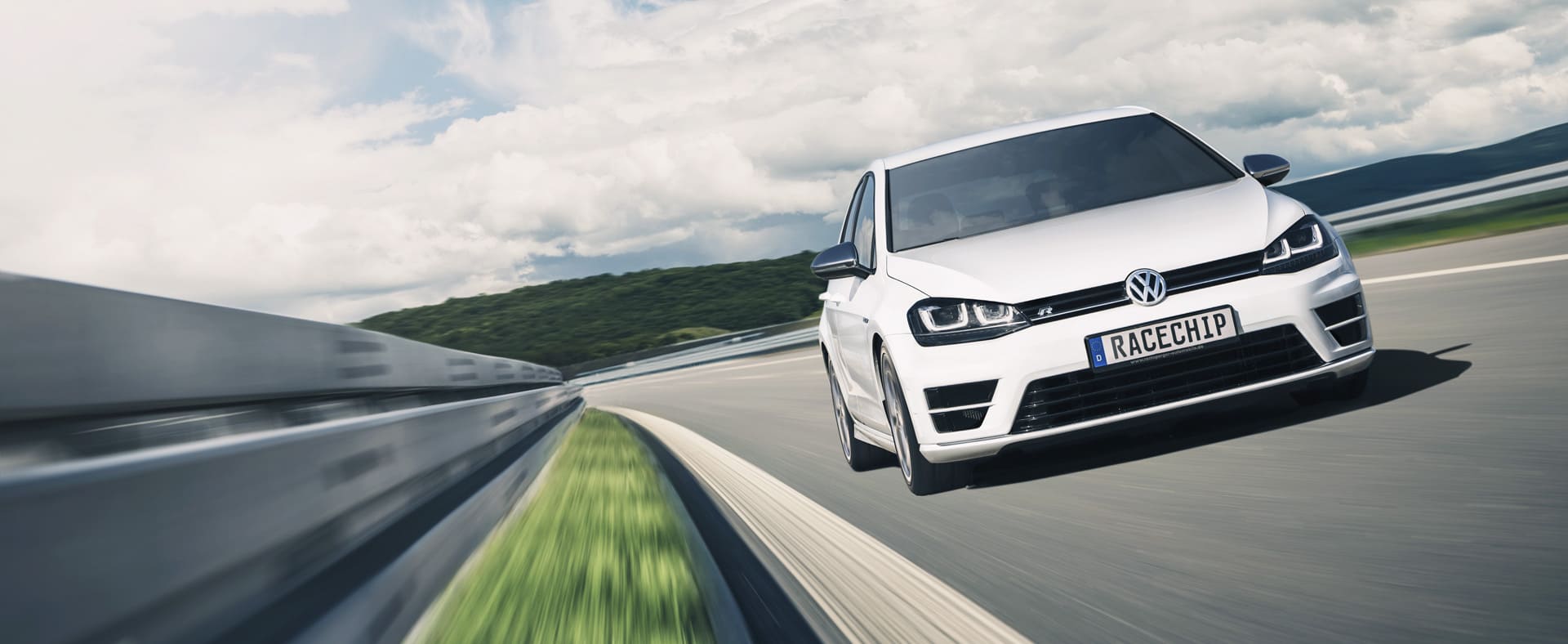

About the engine: the new Golf R is the most powerful Golf production ever. A 2.0l turbo gasoline masterpiece from the Volkswagen group, the 2.0 TFSI, with its 1.984ccm, has over 300hp (221kW) and 380Nm torque (manufacturer parameters). On the test bench the R showed a little extra performance: 319hp and around 400Nm before optimization. The engine works with direct and manifold injection, and we have specially adapted our product to take this into account.
It was a special treat for our engineers. There was a wait of several days for the customization of our RaceChip Ultimate for the Golf R, with its 300hp 2.0 TFSI, from the Volkswagen group. With the TFSI engines working in combination with our chip tuning products, we managed to achieve an extensive set of impressive results. Take for example the Golf GTI or the Audi S3. The standard unused power reserves of the 2.0 TFSI in the different stages of development are the ideal basis for our performance improvements. Volkswagen sometimes shows us, with concept cars like the Golf R400, that real power reserves lie unused inside this type of engine.
We at RaceChip use the same technological basis for our electronic power boost that the manufacturers use to increase the performance of their vehicles. Our specially tailored RaceChip Ultimate, when installed in the “R”, catapults the vehicle’s performance to that of a sports car, without compromising the quality or the durability of the engine. And if you don’t believe us, then experience it yourself!
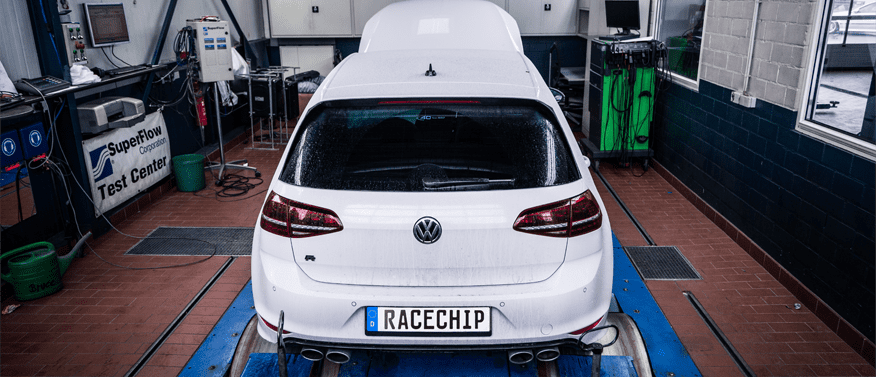
Our chip tuning is always tailored to the individual engine. Each engine is different, and this fact is especially important when it comes to performance optimization, in order to produce the best possible driving experience.
To configure our RaceChip Ultimate, we adjusted our optimization software in a first test run on the Golf R. Here, our extensive experience with the 2.0 TFSI engine played a major role. In the early stages, we were able to achieve a good performance boost. But “good” wasn’t good enough for us. It had to be the best possible configuration.
Once an initial adjustment has been found, the gradual optimization of our performance enhancement begins. Test runs are used alternately with extensive testing to evaluate the selected settings. The actual quality of a performance improvement can only be judged and experienced on the road. This way, we gradually reach the ideal parameters for our optimization software. During testing, the vehicle is put through different driving situations.
It’s all about examining the car in the various scenarios that you will later experience as a RaceChip driver. A regular test cycle involves driving at different speeds, on both urban roads and cross-country highways, as well as in situations that require quick response times.
Once we are convinced we have found the ideal setting for the vehicle, we put it to the test again for a final performance measurement. In addition to the power take-off on the test bench, a range of additional quality tests is performed. We test our product from head to toe before it reaches our customers. Alongside the optimized values of the vehicle, we test the highest achievable speed, the brake system, exhaust emissions and even electromagnetic compatibility. As a RaceChip driver, you receive a performance increase with the highest quality standards.
Leistung Schwarz auf Weiß
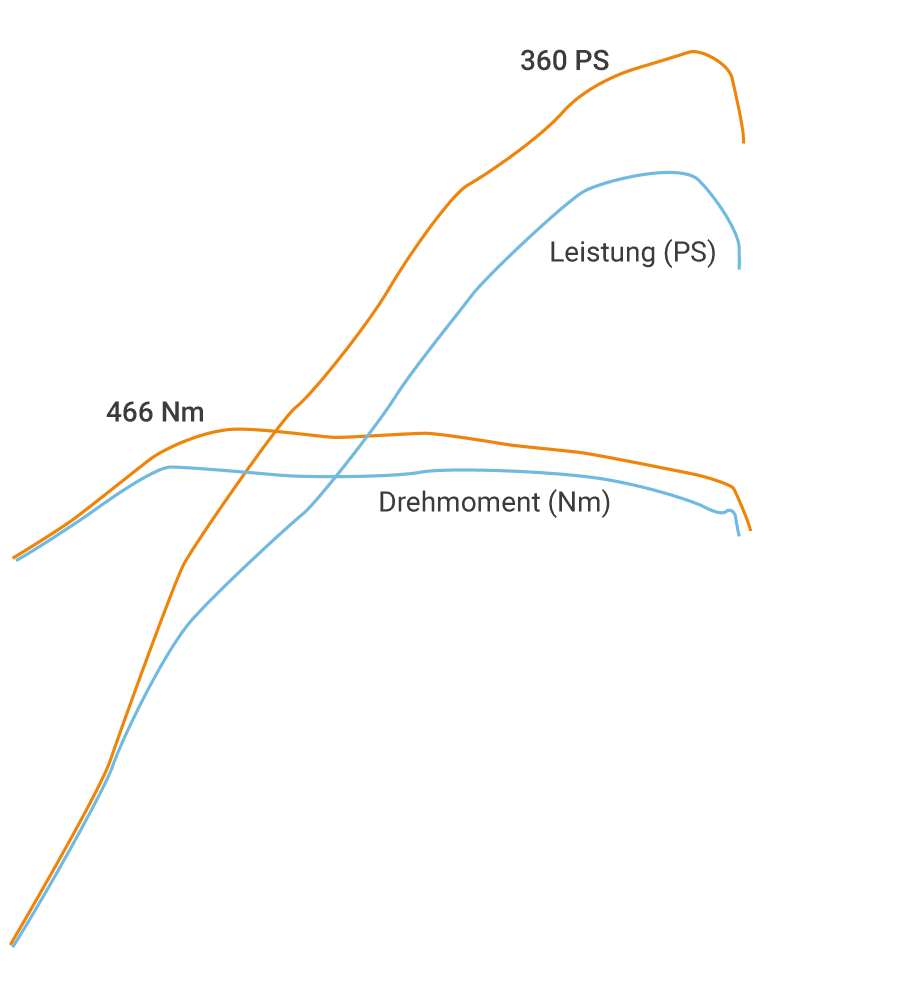
DOWNLOAD
The first impression our developers had after tailoring the Ultimate was that the engine of the Golf was revving with even more gusto, especially in Race Mode. Indeed, it literally put the “R” into “Race”, all the while demonstrating incredible acceleration values. And here the Golf was still at its factory settings. With an unladen weight of 1.5 tons, the vehicle still produced slight vibrations as it buzzed in tune with the Ultimate. Even when changing to higher gears there was a noticeable power increase from the Ultimate. Before optimization, our testers thought that the power of the R could still get a bit more of a boost, and the air intake could also benefit from improvements. These are problems that were completely resolved with the Ultimate. After optimization, there were no more complaints. On dynamic corners, the R accelerates superbly, and in a way that we have rarely seen before. The RaceChip Ultimate, a 4Motion powertrain and the chassis of the R: all working together in perfect harmony.
At the tip of the corner, the Golf R once more has the ideal traction, and it can immediately convert 360hp into propulsion power. What’s more, when driving on motorways, you won’t be overtaken. Often cars with minimal engine displacement lack some air when hitting the 200 Km/h mark. The R, together with the Ultimate, masters the 200 Km/h benchmark, just as it did at 100 Km/h on its own. This much is clear: our developers have once again done a great job.
We were able to optimize the dual direct- and manifold-injection system perfectly for electronic performance. Before tuning, the Golf had already achieved an impressive upper speed spectrum and high performance values. Its torque of 380Nm unfolds across a range of about 1,800 - 5,500rpm. But it gets even better. Sophisticated optimization of the boost-pressure sensor control, combined with an integrated re-adjustment of the engine control system (using the Lambda probe in the optimization cycle), allowed us to achieve a power output of 360hp and a torque increase up to 460Nm. The performance chart illustrates beautifully how our performance increase was able to catapult the Golf R to a completely different level, starting at an engine speed of 2,000rpm. As such, the Golf R should under no circumstances feel inferior to the new RS3 (8V) or A45 AMG - it's absolutely on the same level. And the BMW 135i or Audi S3 (8V) will be taking a long, hard look at the Golf R with a RaceChip Ultimate - from behind.
The engine in the Golf R uses a dual-injection system, with direct and manifold injection, and we have tailored our Ultimate performance optimizations accordingly. With the combination of these two injection systems, this Volkswagen 2.0 TFSI delivers increased torque with reduced fuel consumption and emissions. High performance, gasoline-based direct-injection technology is perfect for torque and peak power, but at low speeds and light loads, it doesn’t have the optimum carburation, and there are higher exhaust emissions. Manifold injection is better for partial loads and low speeds. By combining the two systems, the driver benefits from the strengths of both and the weaknesses are almost completely eliminated.
To enhance the engine of the Golf R, we will first optimize the signals of the two boost pressure sensors at the intake manifold. These measurements are used to control the engine, the turbocharger and, in turn, to adjust the manifold pressure.
Information on cylinder capacity and air mass information (oxygen saturation of the intake air) allows for a precise determination of how much oxygen (per working cycle) is in the combustion chamber. Because oxygen is required for combustion, the injected fuel quantity is directly proportional to the amount of oxygen that is already present. Using this information, the engine control unit can calculate the maximum possible injection quantity. The fuel dosage, as it relates to the oxygen content in the cylinder, is already very precise (considerably more accurate than a perfectly tuned engine with carburettor/mechanical fuel injection). The ratio of oxygen to fuel is then checked one more time and, if necessary, slight adjustments are made. To do this, a measurement of the residual oxygen in the exhaust gas is performed by a Lambda sensor. If this exceeds a certain level, then the mixture contains too little fuel, and the engine control unit will increase the injection quantity until the optimal Lambda value is achieved. Conversely, the fuel quantity is reduced if the Lambda sensor detects no oxygen.
Our sophisticated optimization software takes into account the aforementioned combination of boost pressure, engine displacement and oxygen content - in conjunction with the re-adjustment mechanisms of the ECU via the Lambda sensor - to maximise the actual power reserves of the Golf R, and to achieve a significant power increase. By adjusting the values of the boost pressure sensors, and at the same time optimizing the injection quantity to achieve more power, the RaceChip achieved optimum energy efficiency alongside improved fuel combustion. The ideal companion for this installation is a K&N replacement air filter. The result for the Golf R is a performance increase from 319hp (series measurement) to 360hp (RaceChip-optimized), while torque levels jumped from 400Nm (series measurement) to 460Nm. With this optimization, we are further exploring the existing, untapped power reserves of the Golf R. All relevant engine data was collected throughout the optimization process and checked in real time for plausibility. The built-in safety systems of the 2.0 TFSI in the Golf R are always active and the engine is always protected. And to provide you with even better engine safety, you receive a two-year warranty* with the purchase of the RaceChip Ultimate for the Golf R - directly from RaceChip itself. This means that you are always on the safe side.

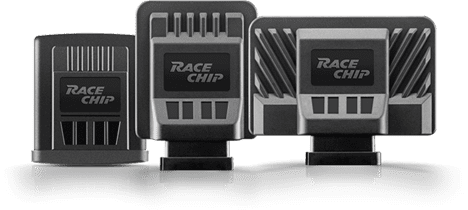





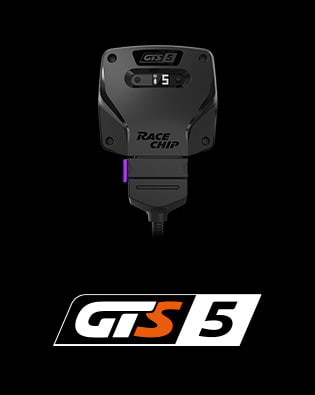


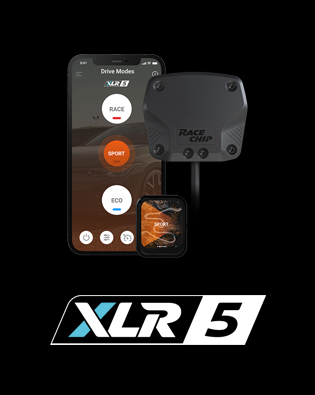
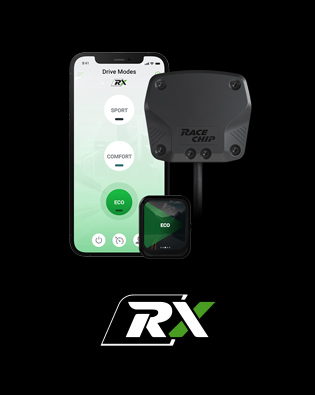


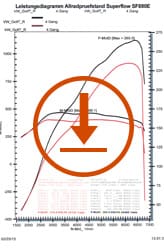


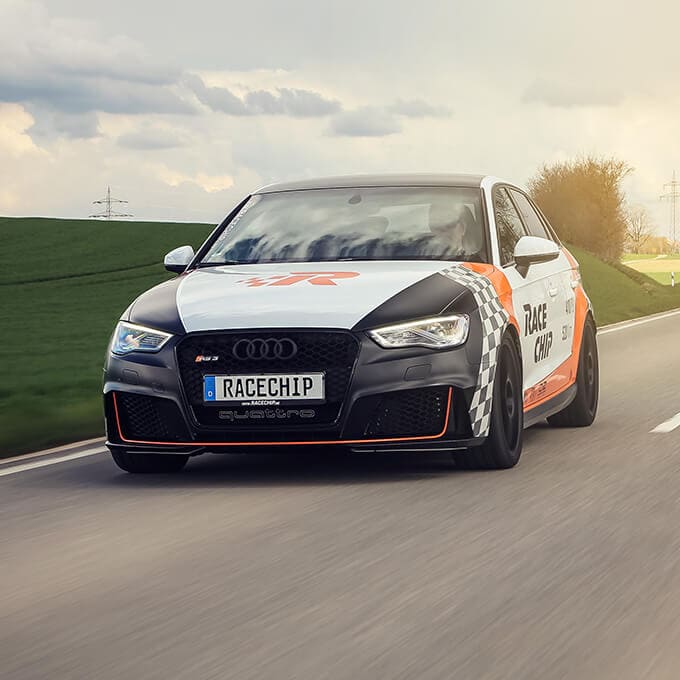








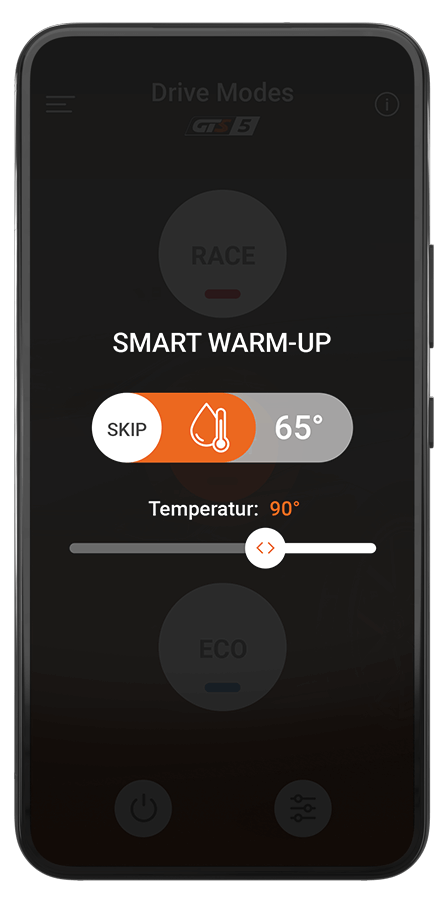

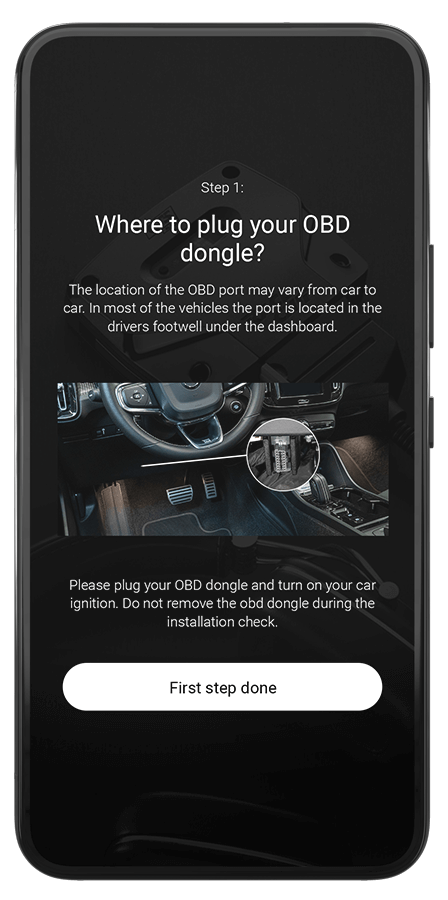

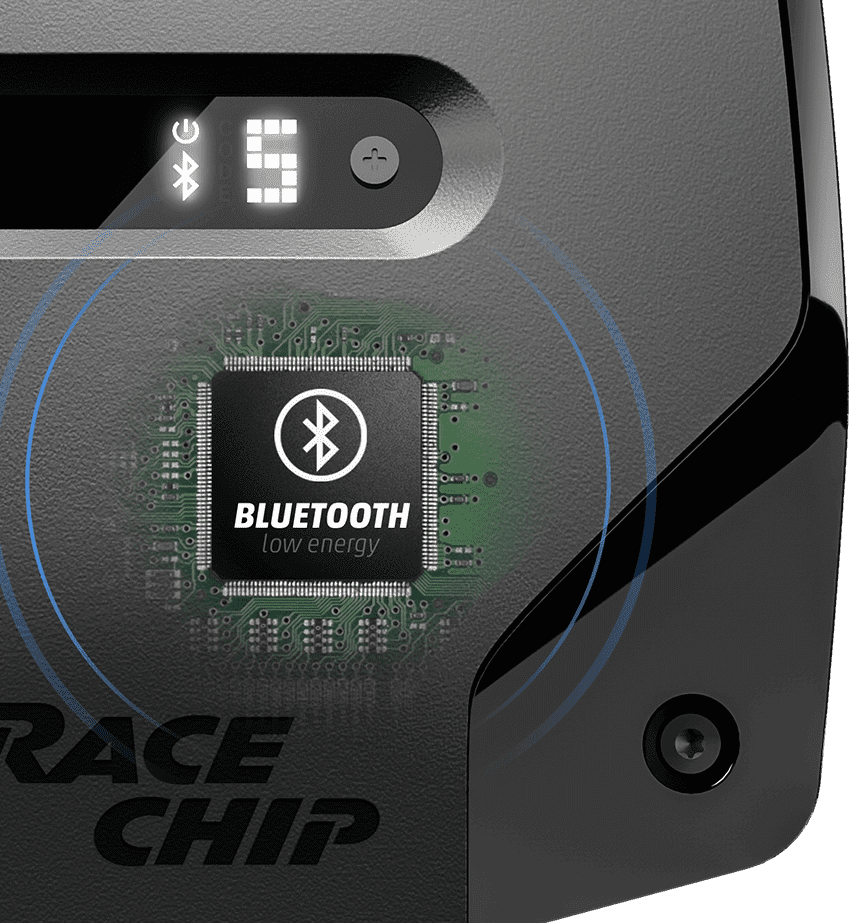

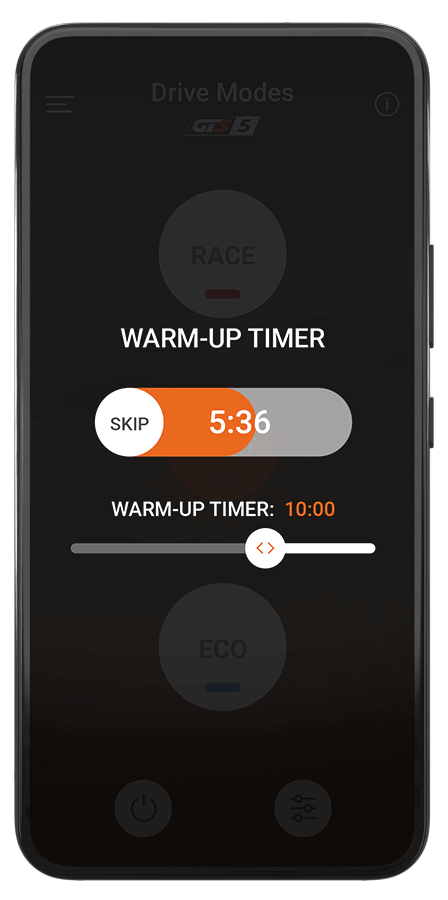
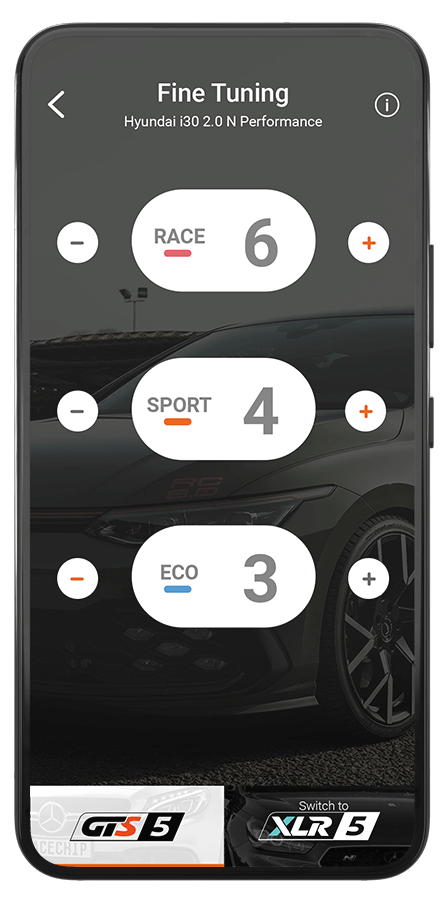
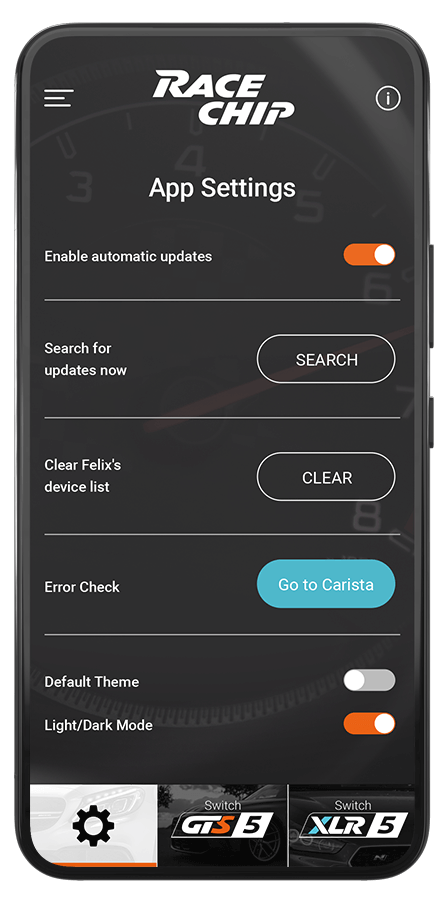
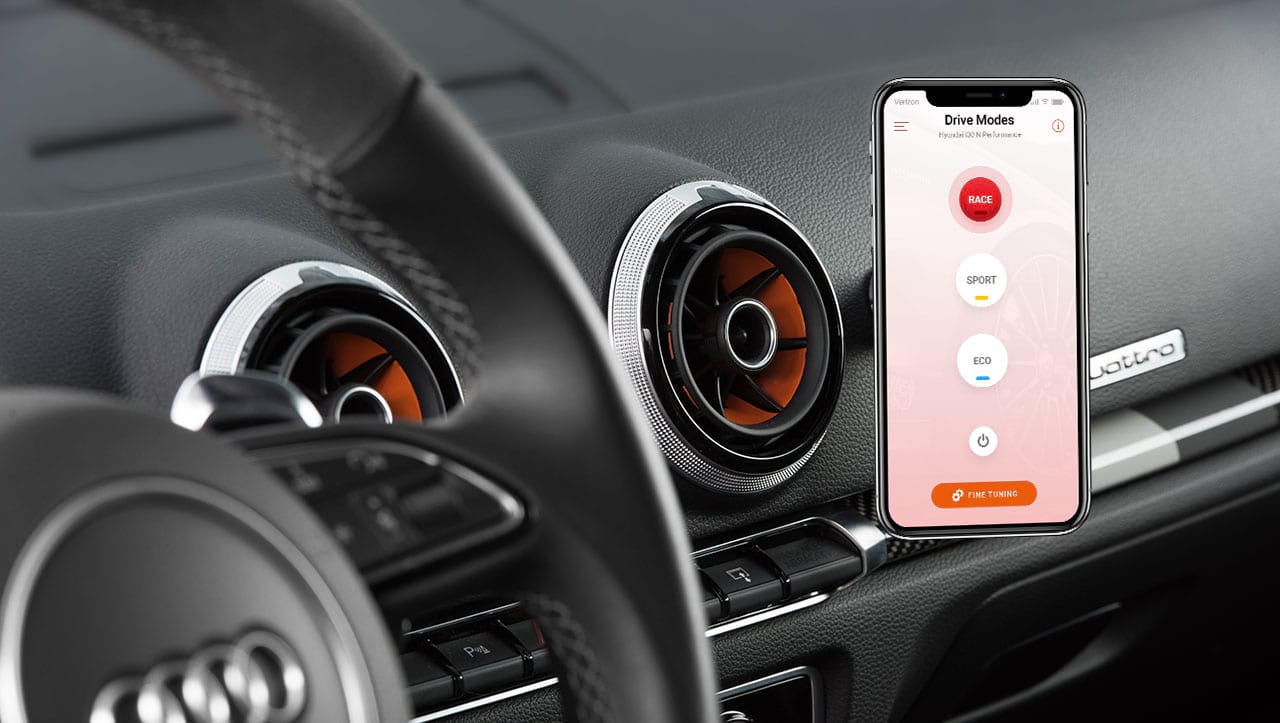
Diskutieren Sie mit uns mit